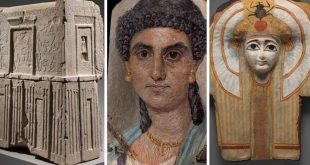The current protests in Iran may be a sign that the regime is now getting a taste of its own medicine after years of spreading instability and terror in the region.
Hany Ghoraba
To elaborate on the destructive role played by the Iranian regime in the region since 1979 would requires volumes. There has hardly been a more interventionist regime in the Middle East over the past four decades that has exported more radicalism and terrorism to the region.
The Iranian regime, which believes in exporting the tenets of its Islamic Revolution of 1979 across the region, is now facing a taste of its own medicine. However there is a feeling among the rulers of Iran that the methods of repression, that have been used in the country over the past four decades will not work anymore; as a result of the current waves of protests that have spread in almost 100 towns and cities across the country.
The recent surge in the Iranian protests, turning into an unprecedented uprising in the country, has already claimed the lives of over 160 protesters, according to the international rights group Amnesty International; a number disputed by the Iranian authorities.
Like the current Lebanese uprising, the Iranian protests were ignited by a sudden increase in fuel taxes and tariffs on crucial commodities.
In the Iranian case, fuel prices were the catalyst, with the authorities suddenly lifting subsidiaries. As a result, fuel prices in Iran increased by 50 per cent overnight to a limit of 60 litres of fuel per person and up to 300 per cent for every litre exceeding this quota.
The “60 litres of fuel” was designated as a monthly ration; hardly enough for most citizens to last even a week, let alone an entire month. Despite the hardships that have been happening in Iran for decades. This snap decision was the spark that led to the most violent uprising in the country since 2009, which was quelled by the Iranian Revolutionary Guard at the time.
Showing disdain for the protesters, Iran’s leader Ayatollah Khamenei; who endorsed the price hikes, called the protesters “counter-revolutionaries”, which the Iranian regime took as a signal that a gruesome fate awaits those caught protesting against government policies.
Public executions have characterised the regime of the Iranian mullahs over the years. Thousands have been sentenced to death by hanging in public; to send messages to any potential dissidents.
A decade after the 2009 uprising, the situation in Iran has not improved, except that today the economic instability has got worse as a result of growing inflation. To rub salt into the wounds, the Iranian regime has also wasted the funds unblocked as a result of its nuclear deal with the West in 2015 that allowed for the monitoring of its nuclear activities.
Instead of utilising these funds to improve the economic conditions of Iranian citizens, the regime escalated its destabilising policies across the region, starting from Iraq and Lebanon and going all the way to Yemen. In these countries, the Iranian regime has supported terrorist groups such as Hizbullah in Lebanon, the Houthis in Yemen, and various militants in Iraq; all of which have contributed to the destabilisation of the region.
US President Donald Trump rejected the Iranian nuclear deal; even before becoming president, believing that lifting the ban on frozen Iranian funds would encourage Iran to continue its interventionist and hostile activities in the region. His prophecy was realized. The Iranians spared no time in resuming their activities after the lifting of some economic restrictions on the country following the signing of the controversial deal.
Trump then unilaterally withdrew the US from the deal named the Joint Comprehensive Plan of Action (JCPA) with Iran in 2018 and launched a new list of sanctions on the regime; aimed at containing Iranian oil exports and preventing the regime from using its financial resources for hostile activities.
The plan has evidently worked, despite the objections of Russia and the European countries which co-signed the nuclear deal. Some of the latter have now created a new financial utility aimed to circumvent the US sanctions on Iran that have included proscribing the Iranian Revolutionary Guard as a terrorist organisation.
The current Iranian protests are a by-product of the US sanctions, but even so for a country that is a world leader in oil exporting to limit its own citizens’ consumption, simply reflects the regime’s incompetence and its desperate need for its frozen assets.
Now, that the lifting of subsidies has backfired, it is likely to get worse. Any further increase in fuel prices would impact on other commodities such as food supplies, medicines, etc. There are indications that, despite the draconian methods used by the Iranian regime, the uprising is not wavering, and it is unlikely to waver without concessions from the regime. Furthermore, the more casualties there are as a result of repression by security forces, the more likely that the vicious circle of violence will continue.
The Iranian authorities have imposed an Internet shutdown and other measures to keep the news of the uprising away from the international media. Iranian President Hassan Rouhani, once described by the Western media as the “saviour” of Iran, said that “the lifting of the fuel subsidies was a necessary move to save funds to distribute to the impoverished in Iran”. But this does not sound very likely; particularly from a regime that funds terrorist groups such as Hizbullah with up to $1 billion annually in order to keep a foothold in Lebanon.
Other expenses have included open support for the Houthi rebels in Yemen, who are treated by Iran as proxy against Saudi Arabia. This does not sound like a regime that plans to save funds for the poor. The September 2019 attack on oil refineries in Saudi Arabia by drones, linked to Iran, is only one reminder that the regime has been increasing its destabilizing policies in the region; including its nuclear-weapons program, which the Iranian mullahs use as a bid to make them seem invulnerable.
It looks as if the chickens coming home to roost. Since the Iranian regime has been instrumental in funding terrorism and instability across the region; including support for terrorist activities in Egypt, and it is now getting a taste of its own medicine.
It is unlikely that Khamenei or other key figures in the Iranian regime will be rattled by the protests in Iran. But should they continue, they could stir discontent among Iranian army generals; who might be encouraged to take action to calm the growing uprising, especially since the protesters have torched branches of the notorious Basij militia and the Iranian Revolutionary Guard.
The politics of fear and repression may no longer be working in Iran.
*The writer is a political analyst and author of Egypt’s Arab Spring and the Winding Road to Democracy.
From Al-Ahram Weekly






